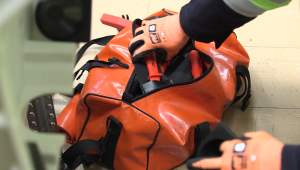Date: June 4, 2025

Introduction
In the demanding world of electrical work, precision, knowledge, and adherence to safety protocols are paramount. Even the most seasoned professionals can, over time, inadvertently develop minor bad habits or overlook small details when using their hand tools. While often unintentional, these oversights can potentially compromise personal safety, damage valuable equipment (including your tools), or lead to inefficient work. This post shines a light on seven common mistakes made with electrical hand tools and offers clear guidance on how to avoid them, ensuring you work safer and smarter.
1. Mistake: Using Damaged or Compromised Insulated Tools
- The Pitfall: The insulation on your VDE-certified tools is your primary defence against electric shock. Nicks, cuts, deep abrasions, cracks, or burn marks – even on robust materials like advanced Nylon Thermoplastic – can create a path for electricity, rendering the tool unsafe.
- The Fix: Implement a rigorous pre-use inspection before every single use. Carefully examine the entire insulated area. Understand any visual wear indicators if your tools have multi-layer insulation. If any damage is found, immediately remove the tool from service. Remember, even tools with a lifetime warranty (like those offered by ITL) should be replaced if damaged, not used in a compromised state. Your safety is non-negotiable.
2. Mistake: Choosing the Wrong Tool for the Specific Task
- The Pitfall: Using pliers as a makeshift hammer, employing the wrong size or type of screwdriver (e.g., a PH instead of a PZ for Pozidriv screws), or using a tool beyond its intended capacity can damage the fastener, the workpiece, and the tool itself. More critically, it can lead to slips, loss of control, and potential contact with live parts or short circuits.
- The Fix: Maintain a comprehensive and appropriate toolkit. Understand the specific function of each tool – from VDE slim screwdrivers for recessed terminals in MCBs to correctly sized insulated spanners for nuts and bolts. Using the right tool ensures a proper fit, adequate leverage or torque, and safer operation.
3. Mistake: Treating Insulated Tools as an “Invincibility Cloak”
- The Pitfall: Developing complacency just because you’re using 1000V rated insulated tools. This can lead to cutting corners on vital safety procedures like Lockout/Tagout/Verify (LOTOV) or working with less caution than required around live equipment. The 1000V rating is a safety margin for accidental contact, not a license to disregard fundamental safety rules.
- The Fix: Always treat de-energisation (LOTOV) as your primary method of hazard control. Insulated tools are a crucial secondary layer of protection. Maintain unwavering respect for electricity, adhere to safe approach boundaries, and never assume a circuit is dead until proven so by testing.
4. Mistake: Modifying Certified Insulated Tools
- The Pitfall: Grinding down screwdriver tips to fit a non-standard screw, bending plier handles for “better” leverage, or otherwise altering the structure or insulation of a VDE-certified tool is incredibly dangerous. Such modifications immediately void the certification, compromise the tool’s structural integrity and dielectric strength, and introduce unpredictable risks.
- The Fix: Never modify your certified insulated tools. If a standard tool doesn’t suit a specific, unique application, seek out a specialised, properly certified alternative designed for that purpose.
5. Mistake: Improper Tool Storage and Cleaning
- The Pitfall: Tossing insulated tools unprotected into a general toolbox with sharp, heavy, or oily uninsulated tools can easily lead to cuts, abrasions, or chemical contamination of the insulation. Using harsh solvents for cleaning can also degrade the insulating material over time.
- The Fix: Store your insulated tools in dedicated pouches, rolls, or a separate compartment within your toolbox to protect them from physical damage and contamination. Clean them according to manufacturer recommendations, typically with mild soap and water, ensuring they are thoroughly dry before storage.
6. Mistake: Using Uninsulated Tools Near Potentially Live Circuits
- The Pitfall: This might seem obvious, but in a rush or through oversight, the temptation to use a nearby uninsulated tool for a quick adjustment in or near an electrical panel can arise. This exposes you to the full risk of electric shock or initiating a short circuit if accidental contact occurs.
- The Fix: Make it a rule: if there’s any potential for encountering energised components, insulated tools are mandatory. This applies even if circuits are believed to be isolated, right up until they are proven de-energised through proper testing.
7. Mistake: Neglecting to Test – Both Your Equipment and the Circuit
- The Pitfall: Forgetting to test your voltage tester on a known live source before and after checking a circuit (the “Live-Dead-Live” method) can lead to a false sense of security. Similarly, failing to verify that a circuit is truly de-energised before commencing work, even when planning to use insulated tools, is a critical oversight.
- The Fix: Make the Live-Dead-Live test an ingrained habit for your voltage testing equipment. Always use a properly functioning voltage tester to confirm a zero-energy state on any circuit you intend to work on.
Conclusion: Safety Through Vigilance and Quality Tools
Avoiding these common mistakes isn’t just about following rules; it’s about cultivating an unwavering commitment to personal and workplace safety. By pairing good habits and diligent practices with high-quality, well-maintained VDE-certified insulated tools – particularly those designed for longevity and backed by comprehensive assurances like ITL’s lifetime warranty – you build a robust foundation for a safe and successful career in the electrical trades.
Invest in your safety, invest in your skills. Choose tools designed to protect you and perform reliably. Browse our range of premium insulated tools, engineered for the professional. https://insulated-hand-tools.co.uk/shop/
